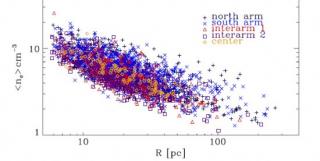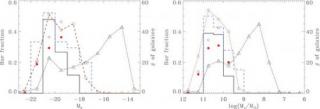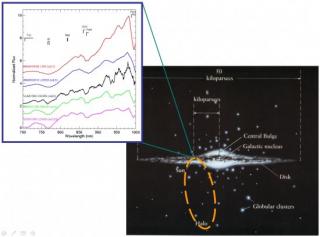
Using images of the Advanced Camera for Surveys" of the Hubble SpaceTelescope we have analyzed the global physical parameters of thepopulations of HII regions in two galaxies: M51 and NGC 4449. M51 is a large spiral, in which we have measured and catalogued the Halpha luminosities, the radii, and the positions of more than 2000 of its HIIregions, while NGC 4449 is a dwarf irregular, in which we have catalogued over 200 HII regions. From these measurements we have obtained the mean electron densities, and have derived two simple but powerful relations. The electron density n_e of an HII
Advertised on

